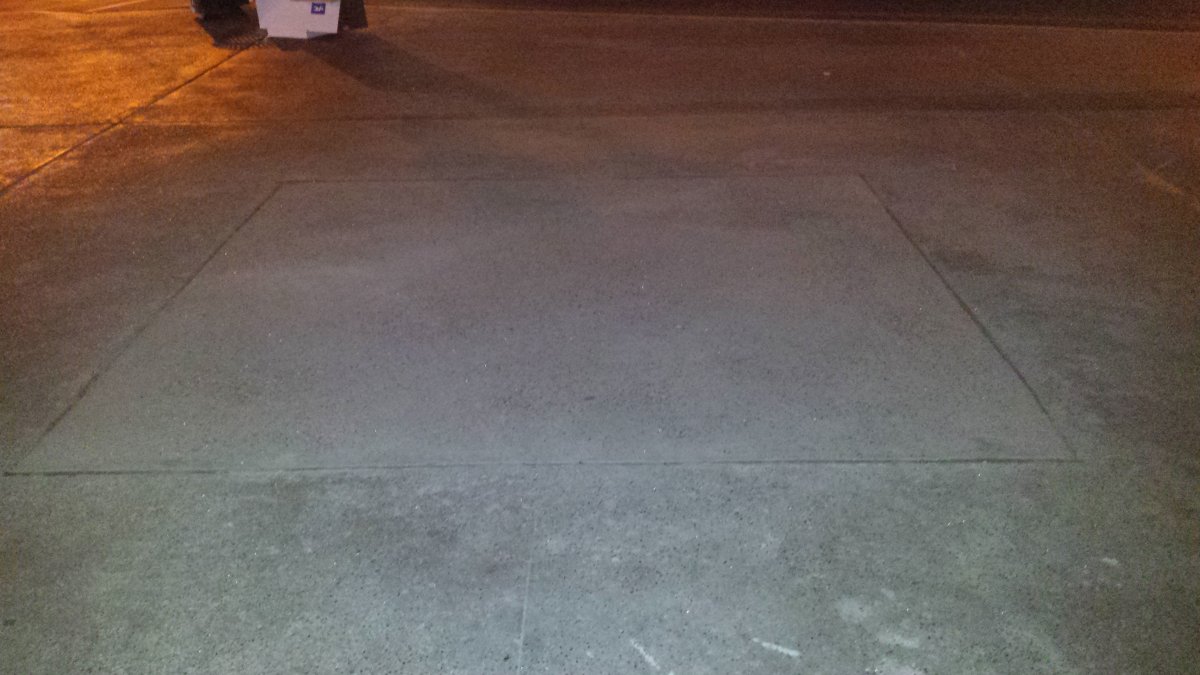
BY LINCOLN ANDERSON | Last week, The Villager reported that the foundation for “The Alamo” had been excavated, paving the way for the signature statue’s return sometime soon.
Speaking of paving, however, as soon as the hole appeared, it seemed, only a few days later, it was paved back over.
What’s going on?
William Kelley, executive director of the Village Alliance business improvement district, explained that the hole won’t be excavated again. What was actually done last week, he said, was that a 3-foot-deep foundation of solid cement was installed at the spot. Sidewalks are normally only from 4 inches to 7 inches deep. But securing a large sculpture such as “The Alamo” a.k.a. “The Cube” requires that long bolts be anchored into a thick foundation. Similarly, Jim Powers’s seven restored mosaic-encrusted lampposts will all be anchored to underground concrete foundations, he said.
First, the base will be bolted onto the concrete foundation, and then “The Alamo” will be attached to the base.
Currently, the iconic East Village sculpture — which will celebrate its 50th anniversary next year — is still in exile in uncool New Jersey where it is being spruced up by Aegis Restauro, Kelley said. It was opened up and cleaned of rust, and a special coating is now being added on its exterior to make it easy to remove graffiti by using solvents without damaging the artwork.
“It gets tagged once or twice a month,” he noted. In the past, they just covered over the scrawls with black paint.
“It was restored in 2005 — it had stopped turning,” Kelley said of the spinnable sculpture.
The BID director said it’s his understanding that “The Alamo,” created by sculptor Tony Rosenthal, was the city’s first piece of art in its public art program — as in an “art for art’s sake” creation, not necessarily a memorial or monument.
He said all the new planting beds in the newly expanded Astor Place and Cooper Square pedestrian plazas will come in in September.
“That will really green it up,” he said. “It will be thousands and thousands of plants.”
Railings will be added to all the new benches to keep people from sleeping on them overnight. Kelley said the BID does not have public safety officers on patrol overnight. If homeless people want to hang out on the plazas, however, he said, “Look, it’s a public space.”
Meanwhile, Power is hard at work finishing up his pole restorations at the Sixth St. Community Center.
“Jim is working toward a September completion,” Kelley said. “He’s putting pressure on himself. I do think it’s going well. We’re going to have a dedication of them in September.”

















